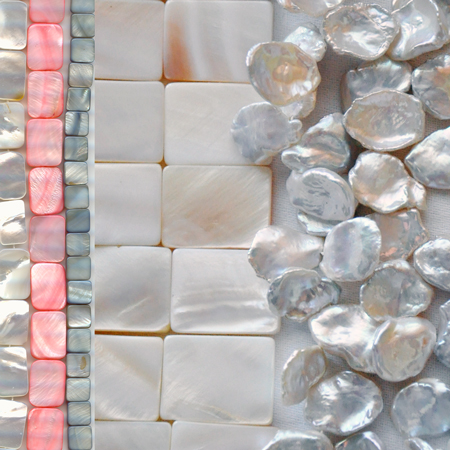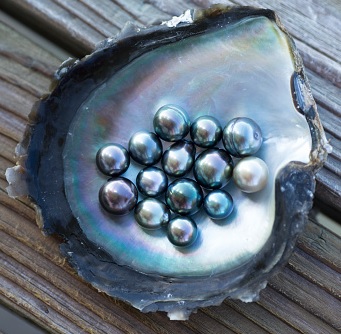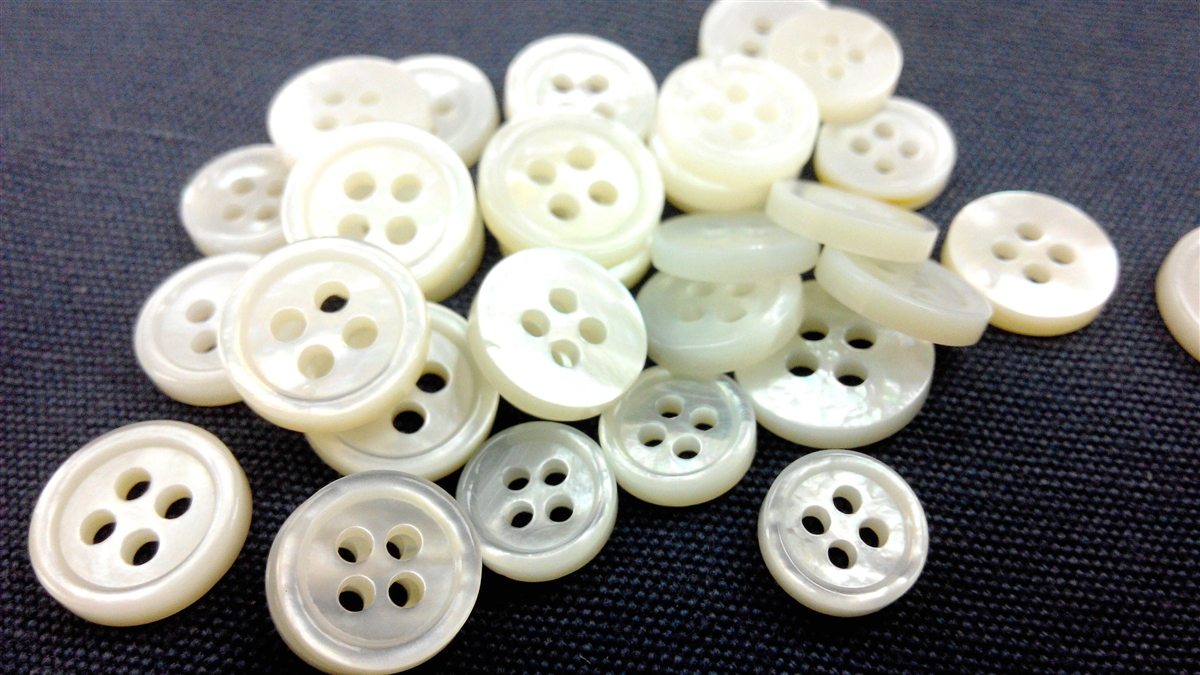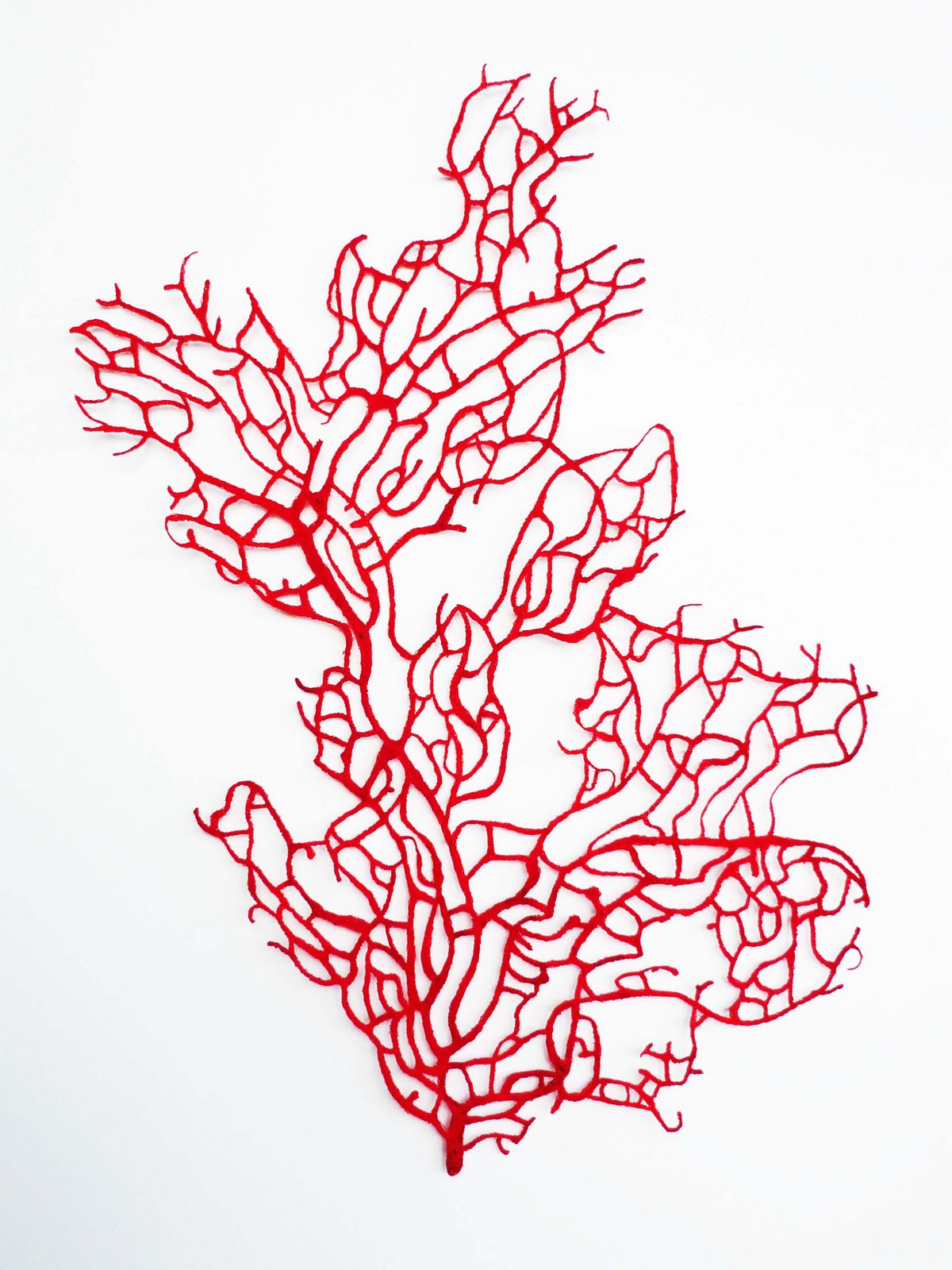f u n f a c t s :

According to gemologist George Kunz, pearls were first harvested off the coast of India by an
ancient tribe of fisherman that appreciated the luster of saltwater pearls from oysters they ate.
During the
Roman period, pearls were extremely popular and the subject of a famous banquet scene between Marc Anthony and
Cleopatra in which she proved the wealth of Egypt by crushing and eating one of her pearls. Kokichi Mikimoto,
the son of a Japanese noodle-maker, revolutionized the pearl industry when he successfully tested ways to
introduce foreign objects to oysters leading to the creation of cultured pearls.
Mother of pearl is the most common shell used in jewelry design because it's beautiful, durable and
versatile. Mother of pearl refers to the nacreous lining - distinguised by iridescent colors- of pearl
oysters, abalones (paua), and mussels. Perhaps our fascination with shells begins with the first discovery of half a whelk or a clam
shell or a complete mussel shell while walking on the beach. Who could expect the smooth rainbow
of color from the rough, weathered exterior?
Not only is mother of pearl shell beautiful naturally, but it can also be dyed to great effect. The shell keeps
its luminous quality, but now glows in extraordinary colors. Likewise, coral can be shaped and dyed to
extraordinary effect and adds earthy, organic elements to jewelry pieces.
•• p e a r l s
There was a time when a large natural pearl could fund an army (Roman general Vitellius), given
pearls' rarity and worth.

One of the attractions of the "New World" was the number of large,
lustrous freshwater mussel pearls available in the Ohio, Tennessee and Mississippi river basins.
Pearls come from either saltwater pearl oysters of the genus Pinctada (family Pteriidae)
or freshwater pearl mussels of the families Unionidae and Margaritiferidae. The famous black
Tahitian or South Seas pearls are created by the oyster speicies Pinctada maxima, which are cultured
primarily in Tahiti and Australia. Saltwater pearl oysters include the gulf pearl oyster, golden-lip
oyster, black-lip oyster and Akoya pearl oyster. Japan and China remain the leaders of saltwater
and freshwater pearl production.
•• m o t h e r o f p e a r l s h e l l
Mother of pearl refers to the nacre lining the mantle of oysters and mussels. Mother of pearl may
be light colored, as from golden-lip oyster shells, or dark (black-lip oyster shells), or an
amazing blue-green (paua shell). Paua is the Maori word for
the mollusk known as abalone in the US and Australia.

Freshwater mussels often have thick layers of nacre, and this helped the US become the
world's largest exporter of mother of pearl buttons. This industry remained strong until the birth of
cheaper plastic buttons after World War II. Due to the porous nature of shell, it can be dyed
a variety of colors, including deep jewel hues that are clearly not natural! Capiz shell is a flat,
thin, translucent shell from the windowpane oyster that grows in shallows around the Indian ocean
and southeast Asia. It is most often seen in home decorations, such as chandeliers and
lampshades.
•• c o r a l
Coral jewelry components are made from the calcium skeleton remains of marine creatures growing
in saltwater seas. The most valuable coral comes from the species Corallium rubrum and its
variants which grow in shallow seas in the Mediterranean and off the coast of Japan.

It is known
as red coral for the natural cartenoid pigments giving it pink to deep red-orange color, and it
has been popular for jewelry and decoration since the times of ancient Egyptians. Red coral
prefers to grow in dark environments like caves at depths of 10m-350m below sea level, and
an area off the coast of Sardinia is known as "the Coral Riviera" due to the
concentration of red coral in underwater caves off the coast. Other
corals include sponge coral, a porous coral found off the coastline of China and Taiwan, and
bamboo coral, a branch-like coral forming on the ocean floor at deeper depths of up to 610m.
Like paua shell, harvesting red coral is subject to regulation due to concerns of dwindling supply, and there
is greater interest
in sustainably harvesting coral of all types to prevent further deterioration of coral
reefs worldwide. Coral aquaculture is showing promise; corals propagated in nurseries are
replanted on coral reefs in a process similar to horticulture.
•••

 According to gemologist George Kunz, pearls were first harvested off the coast of India by an
ancient tribe of fisherman that appreciated the luster of saltwater pearls from oysters they ate.
During the
Roman period, pearls were extremely popular and the subject of a famous banquet scene between Marc Anthony and
Cleopatra in which she proved the wealth of Egypt by crushing and eating one of her pearls. Kokichi Mikimoto,
the son of a Japanese noodle-maker, revolutionized the pearl industry when he successfully tested ways to
introduce foreign objects to oysters leading to the creation of cultured pearls.
Mother of pearl is the most common shell used in jewelry design because it's beautiful, durable and
versatile. Mother of pearl refers to the nacreous lining - distinguised by iridescent colors- of pearl
oysters, abalones (paua), and mussels. Perhaps our fascination with shells begins with the first discovery of half a whelk or a clam
shell or a complete mussel shell while walking on the beach. Who could expect the smooth rainbow
of color from the rough, weathered exterior?
Not only is mother of pearl shell beautiful naturally, but it can also be dyed to great effect. The shell keeps
its luminous quality, but now glows in extraordinary colors. Likewise, coral can be shaped and dyed to
extraordinary effect and adds earthy, organic elements to jewelry pieces.
•• p e a r l s
There was a time when a large natural pearl could fund an army (Roman general Vitellius), given
pearls' rarity and worth.
According to gemologist George Kunz, pearls were first harvested off the coast of India by an
ancient tribe of fisherman that appreciated the luster of saltwater pearls from oysters they ate.
During the
Roman period, pearls were extremely popular and the subject of a famous banquet scene between Marc Anthony and
Cleopatra in which she proved the wealth of Egypt by crushing and eating one of her pearls. Kokichi Mikimoto,
the son of a Japanese noodle-maker, revolutionized the pearl industry when he successfully tested ways to
introduce foreign objects to oysters leading to the creation of cultured pearls.
Mother of pearl is the most common shell used in jewelry design because it's beautiful, durable and
versatile. Mother of pearl refers to the nacreous lining - distinguised by iridescent colors- of pearl
oysters, abalones (paua), and mussels. Perhaps our fascination with shells begins with the first discovery of half a whelk or a clam
shell or a complete mussel shell while walking on the beach. Who could expect the smooth rainbow
of color from the rough, weathered exterior?
Not only is mother of pearl shell beautiful naturally, but it can also be dyed to great effect. The shell keeps
its luminous quality, but now glows in extraordinary colors. Likewise, coral can be shaped and dyed to
extraordinary effect and adds earthy, organic elements to jewelry pieces.
•• p e a r l s
There was a time when a large natural pearl could fund an army (Roman general Vitellius), given
pearls' rarity and worth.
 One of the attractions of the "New World" was the number of large,
lustrous freshwater mussel pearls available in the Ohio, Tennessee and Mississippi river basins.
Pearls come from either saltwater pearl oysters of the genus Pinctada (family Pteriidae)
or freshwater pearl mussels of the families Unionidae and Margaritiferidae. The famous black
Tahitian or South Seas pearls are created by the oyster speicies Pinctada maxima, which are cultured
primarily in Tahiti and Australia. Saltwater pearl oysters include the gulf pearl oyster, golden-lip
oyster, black-lip oyster and Akoya pearl oyster. Japan and China remain the leaders of saltwater
and freshwater pearl production.
•• m o t h e r o f p e a r l s h e l l
Mother of pearl refers to the nacre lining the mantle of oysters and mussels. Mother of pearl may
be light colored, as from golden-lip oyster shells, or dark (black-lip oyster shells), or an
amazing blue-green (paua shell). Paua is the Maori word for
the mollusk known as abalone in the US and Australia.
One of the attractions of the "New World" was the number of large,
lustrous freshwater mussel pearls available in the Ohio, Tennessee and Mississippi river basins.
Pearls come from either saltwater pearl oysters of the genus Pinctada (family Pteriidae)
or freshwater pearl mussels of the families Unionidae and Margaritiferidae. The famous black
Tahitian or South Seas pearls are created by the oyster speicies Pinctada maxima, which are cultured
primarily in Tahiti and Australia. Saltwater pearl oysters include the gulf pearl oyster, golden-lip
oyster, black-lip oyster and Akoya pearl oyster. Japan and China remain the leaders of saltwater
and freshwater pearl production.
•• m o t h e r o f p e a r l s h e l l
Mother of pearl refers to the nacre lining the mantle of oysters and mussels. Mother of pearl may
be light colored, as from golden-lip oyster shells, or dark (black-lip oyster shells), or an
amazing blue-green (paua shell). Paua is the Maori word for
the mollusk known as abalone in the US and Australia.
 Freshwater mussels often have thick layers of nacre, and this helped the US become the
world's largest exporter of mother of pearl buttons. This industry remained strong until the birth of
cheaper plastic buttons after World War II. Due to the porous nature of shell, it can be dyed
a variety of colors, including deep jewel hues that are clearly not natural! Capiz shell is a flat,
thin, translucent shell from the windowpane oyster that grows in shallows around the Indian ocean
and southeast Asia. It is most often seen in home decorations, such as chandeliers and
lampshades.
•• c o r a l
Coral jewelry components are made from the calcium skeleton remains of marine creatures growing
in saltwater seas. The most valuable coral comes from the species Corallium rubrum and its
variants which grow in shallow seas in the Mediterranean and off the coast of Japan.
Freshwater mussels often have thick layers of nacre, and this helped the US become the
world's largest exporter of mother of pearl buttons. This industry remained strong until the birth of
cheaper plastic buttons after World War II. Due to the porous nature of shell, it can be dyed
a variety of colors, including deep jewel hues that are clearly not natural! Capiz shell is a flat,
thin, translucent shell from the windowpane oyster that grows in shallows around the Indian ocean
and southeast Asia. It is most often seen in home decorations, such as chandeliers and
lampshades.
•• c o r a l
Coral jewelry components are made from the calcium skeleton remains of marine creatures growing
in saltwater seas. The most valuable coral comes from the species Corallium rubrum and its
variants which grow in shallow seas in the Mediterranean and off the coast of Japan.
 It is known
as red coral for the natural cartenoid pigments giving it pink to deep red-orange color, and it
has been popular for jewelry and decoration since the times of ancient Egyptians. Red coral
prefers to grow in dark environments like caves at depths of 10m-350m below sea level, and
an area off the coast of Sardinia is known as "the Coral Riviera" due to the
concentration of red coral in underwater caves off the coast. Other
corals include sponge coral, a porous coral found off the coastline of China and Taiwan, and
bamboo coral, a branch-like coral forming on the ocean floor at deeper depths of up to 610m.
Like paua shell, harvesting red coral is subject to regulation due to concerns of dwindling supply, and there
is greater interest
in sustainably harvesting coral of all types to prevent further deterioration of coral
reefs worldwide. Coral aquaculture is showing promise; corals propagated in nurseries are
replanted on coral reefs in a process similar to horticulture.
It is known
as red coral for the natural cartenoid pigments giving it pink to deep red-orange color, and it
has been popular for jewelry and decoration since the times of ancient Egyptians. Red coral
prefers to grow in dark environments like caves at depths of 10m-350m below sea level, and
an area off the coast of Sardinia is known as "the Coral Riviera" due to the
concentration of red coral in underwater caves off the coast. Other
corals include sponge coral, a porous coral found off the coastline of China and Taiwan, and
bamboo coral, a branch-like coral forming on the ocean floor at deeper depths of up to 610m.
Like paua shell, harvesting red coral is subject to regulation due to concerns of dwindling supply, and there
is greater interest
in sustainably harvesting coral of all types to prevent further deterioration of coral
reefs worldwide. Coral aquaculture is showing promise; corals propagated in nurseries are
replanted on coral reefs in a process similar to horticulture.